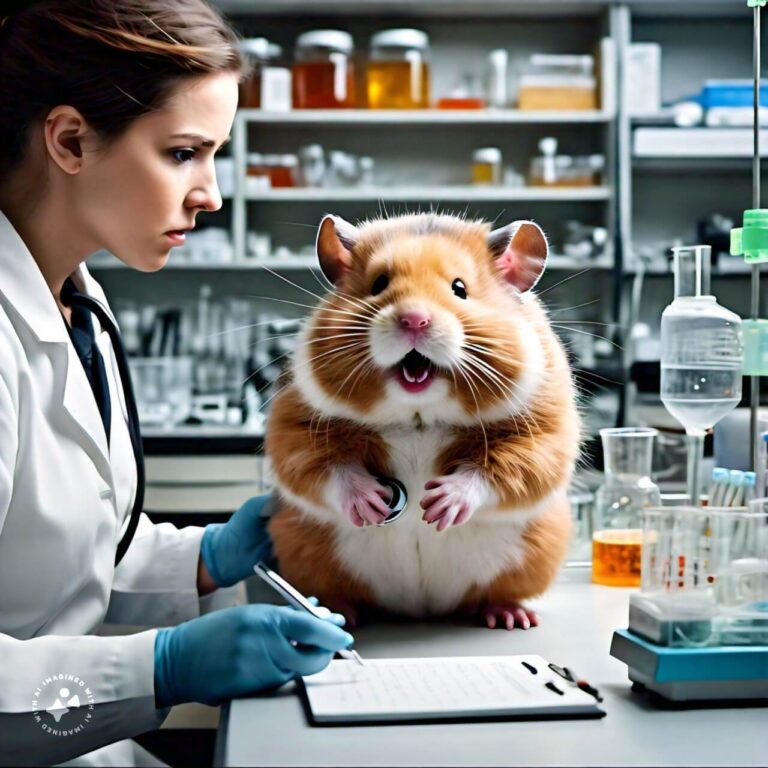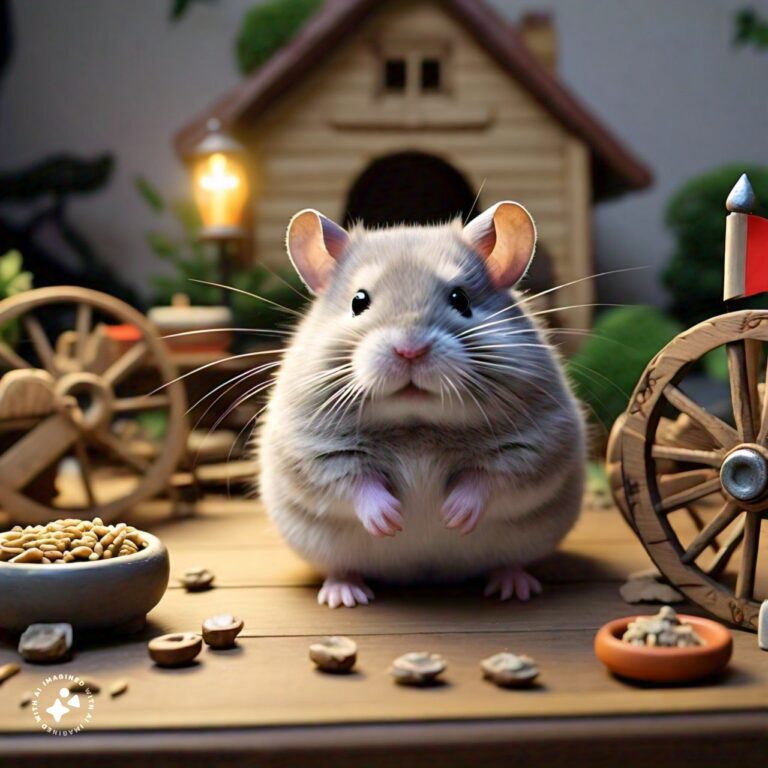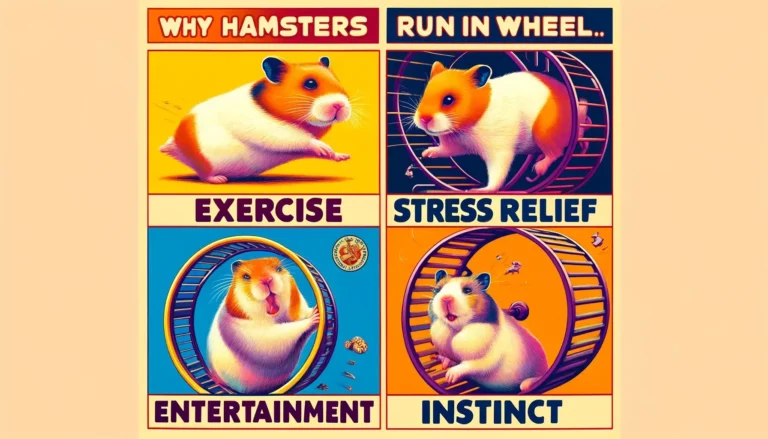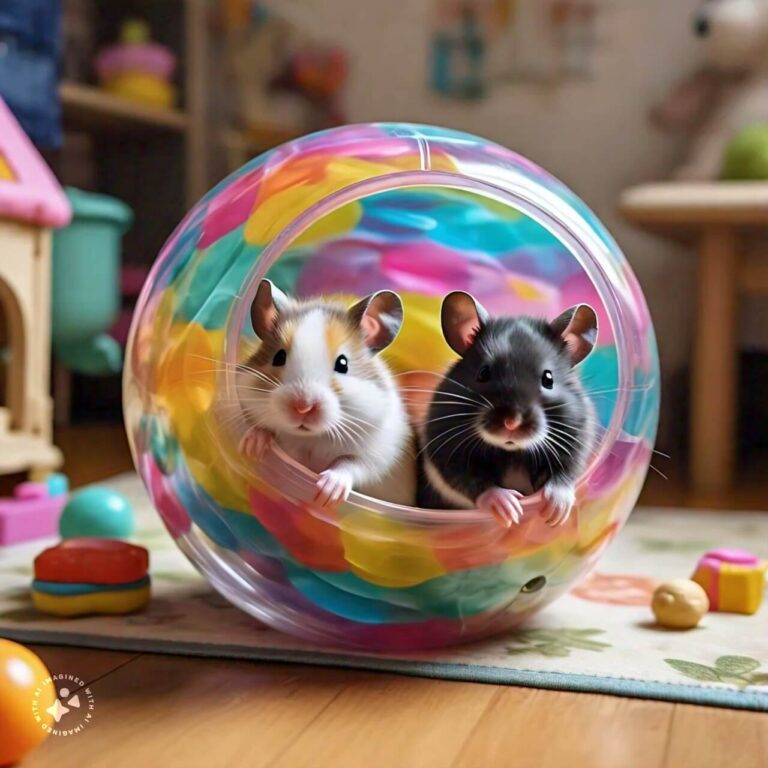How To Decrease Hamsters Fat – hamsters.pk
Healthy Habits: Managing Your Hamster’s Weight
Hamsters are adorable little creatures, but like humans, they can struggle with weight management if not provided with proper care and attention. Just like us, they can suffer from health issues related to obesity, such as diabetes and heart disease. However, with the right approach, you can help your hamster maintain a healthy weight and live a happy, active life.
Understanding Hamster Obesity
Before diving into the strategies for managing your hamster’s weight, it’s essential to understand the factors that contribute to obesity in these small pets. Overfeeding, lack of exercise, and an improper diet are the primary culprits behind hamster weight gain. Additionally, certain breeds of hamsters are more prone to obesity than others, such as Syrian hamsters.
Establishing a Balanced Diet
A balanced diet is the cornerstone of maintaining your hamster’s weight. Ensure that your furry friend’s diet consists mainly of high-quality hamster food pellets, supplemented with fresh fruits, vegetables, and occasional treats. Avoid feeding them high-fat or sugary foods, as these can quickly lead to weight gain. Always provide fresh water and monitor their food intake to prevent overeating.
Portion Control is Key
Controlling portion sizes is crucial for managing your hamster’s weight. Measure out the appropriate amount of food for your hamster based on their size, age, and activity level. It’s better to feed them small, frequent meals throughout the day rather than one large serving. This helps prevent overeating and keeps their metabolism steady.
Encouraging Physical Activity
Regular exercise is essential for keeping your hamster fit and healthy. Provide them with a spacious cage equipped with exercise wheels, tunnels, and toys to encourage activity. Let them out of their cage daily for supervised playtime in a secure, hamster-proofed area. This not only helps burn calories but also provides mental stimulation.
Monitoring Your Hamster’s Weight
Regularly monitor your hamster’s weight to track their progress. Use a small animal scale or weigh them at home using a kitchen scale (just be sure to account for the weight of the container). Keep a record of their weight and any changes over time. If you notice significant fluctuations or unexplained weight gain, consult your veterinarian for guidance.
Seeking Veterinary Guidance
If you’re unsure about your hamster’s weight or nutritional needs, don’t hesitate to seek professional advice. Your veterinarian can provide personalized recommendations based on your hamster’s health status and specific requirements. They can also help create a tailored diet and exercise plan to address any weight-related concerns.
Conclusion
Maintaining a healthy weight is crucial for your hamster’s overall well-being and longevity. By following these healthy habits and incorporating them into your hamster’s daily routine, you can help them stay trim, active, and happy. Remember, small changes can make a big difference in your furry friend’s health, so start implementing these strategies today for a healthier, happier hamster.
Crafting a Balanced Meal Plan for Your Chubby Hamster

Is your hamster tipping the scales a bit too much? Just like humans, hamsters can also struggle with weight gain if their diet isn’t properly managed. Providing your furry friend with a balanced meal plan is crucial for their overall health and well-being. Let’s delve into some dietary adjustments you can make to help your chubby hamster shed those extra grams and live a healthier, happier life.
Understanding Hamster Nutrition
Before diving into specific dietary adjustments, it’s essential to understand the nutritional needs of your hamster. Hamsters require a diet rich in protein, fiber, vitamins, and minerals to thrive. However, overfeeding or offering the wrong types of foods can lead to obesity and other health issues.
Assessing Current Eating Habits
The first step in crafting a balanced meal plan is to assess your hamster’s current eating habits. Take note of what foods they’re consuming and in what quantities. Are they primarily eating high-calorie treats or pellets? Understanding their current diet will help you identify areas for improvement.
Incorporating Fresh Vegetables
One way to reduce your hamster’s calorie intake is by incorporating fresh vegetables into their diet. Vegetables like carrots, broccoli, spinach, and cucumber are low in calories but high in essential nutrients. Be sure to introduce new vegetables gradually to prevent digestive upset, and always wash them thoroughly before offering them to your hamster.
Limiting High-Calorie Treats
While treats can be a fun way to bond with your hamster, they should be given in moderation, especially if your hamster is overweight. Opt for healthier treat options like small pieces of fruit or commercial hamster treats made from natural ingredients. Remember, treats should only make up a small portion of your hamster’s overall diet.
Providing a Balanced Pellet Mix
A high-quality pellet mix should form the foundation of your hamster’s diet. Look for pellets specifically formulated for hamsters that contain a balance of protein, fiber, and essential nutrients. Avoid mixes with added sugars or excessive fat content, as these can contribute to weight gain.
Offering Limited Seeds and Nuts
Seeds and nuts are a favorite treat for many hamsters, but they should be offered sparingly, especially if your hamster is overweight. These foods are high in fat and calories, which can quickly add up. Limit seeds and nuts to occasional treats and opt for healthier alternatives like fresh vegetables instead.
Monitoring Portion Sizes
Finally, pay attention to portion sizes when feeding your hamster. It’s easy to overfeed these small pets, leading to weight gain over time. Follow the recommended serving sizes for pellets and treats, and adjust as needed based on your hamster’s activity level and weight goals.
Conclusion
Crafting a balanced meal plan for your chubby hamster is essential for their overall health and well-being. By incorporating fresh vegetables, limiting high-calorie treats, providing a balanced pellet mix, and monitoring portion sizes, you can help your hamster achieve and maintain a healthy weight. Remember to consult with a veterinarian if you have any concerns about your hamster’s diet or weight. With proper nutrition and care, your furry friend will be on track to a happier, healthier life.
Exercise Essentials: Fun Ways to Keep Your Hamster Active and Slim
Hamsters are known for their adorable chubby cheeks and round bodies, but just like humans, they need regular exercise to stay healthy and slim. In the wild, hamsters are constantly on the move, foraging for food and exploring their surroundings. However, pet hamsters can easily become sedentary if not provided with opportunities for physical activity. In this article, we’ll explore some fun and effective ways to keep your hamster active and help them maintain a healthy weight.
Creating a Stimulating Environment
Hamsters are curious creatures that love to explore and play. By designing an enriching habitat for your furry friend, you can encourage them to be more active. Include items such as tunnels, tubes, and climbing structures in their cage to mimic their natural habitat. Add different textures and materials for them to burrow in and explore, stimulating their senses and encouraging movement.
Wheel Workouts
One of the most popular and effective forms of exercise for hamsters is using a hamster wheel. Providing a wheel allows your hamster to run to their heart’s content, giving them a great cardiovascular workout. Make sure to choose a wheel that is appropriately sized for your hamster, with no openings that could potentially trap their feet. Place the wheel in their cage and watch as they hop on and start running in circles, burning off excess energy and calories.
Obstacle Courses
Get creative and set up a mini obstacle course for your hamster to navigate. Use items such as cardboard tubes, small ramps, and tunnels to create a fun and challenging course within their cage or play area. Hide treats at various points throughout the course to motivate your hamster to explore and complete the obstacles. Not only will this provide physical exercise, but it will also engage their natural instincts to forage and explore.
Interactive Toys and Treat Dispensers
Keep your hamster mentally stimulated and physically active with interactive toys and treat dispensers. There are many toys available specifically designed for hamsters, such as puzzle feeders and rolling balls with treats inside. These toys encourage your hamster to work for their food, providing mental stimulation and physical activity as they push, roll, and manipulate the toys to access the treats inside.
Supervised Playtime Outside the Cage
Give your hamster some out-of-cage time to stretch their legs and explore in a safe and supervised environment. Set up a playpen or designate a hamster-proof area where they can roam freely without the risk of getting lost or injured. Offer toys, tunnels, and obstacles for them to interact with, and be sure to keep a close eye on them at all times. This supervised playtime allows your hamster to burn off energy in a larger space while providing mental stimulation and enrichment.
Conclusion
Regular exercise is essential for keeping your hamster healthy, happy, and slim. By incorporating fun and stimulating activities into their daily routine, you can help prevent obesity and promote overall well-being. Whether it’s running on a wheel, navigating an obstacle course, or exploring interactive toys, there are plenty of ways to keep your hamster active and engaged. So get creative, have fun, and watch your furry friend thrive!
Monitoring and Maintenance: Strategies for Maintaining Optimal Weight in Your Furry Friend
Introduction
Maintaining a healthy weight is crucial for the well-being and longevity of your beloved hamster. Just like humans, hamsters can face health issues if they become overweight. To ensure your furry friend stays fit and active, it’s essential to implement effective monitoring and maintenance strategies. In this guide, we’ll explore practical tips to help you keep your hamster at an optimal weight.
Understanding Hamster Weight
Before diving into strategies for weight management, it’s important to understand what constitutes a healthy weight for your hamster. Hamsters come in different sizes and breeds, so there isn’t a one-size-fits-all approach to determining ideal weight. However, as a general guideline, a healthy adult Syrian hamster typically weighs between 100-200 grams, while dwarf hamsters usually weigh between 25-50 grams. Regular weighing and observation can help you track your hamster’s weight fluctuations and detect any signs of obesity.
Balanced Diet: The Foundation of Weight Management
Diet plays a significant role in maintaining your hamster’s weight. Providing a balanced and nutritious diet is key to preventing obesity. Offer a variety of fresh vegetables, such as broccoli, carrots, and bell peppers, alongside high-quality hamster pellets. Limit the intake of high-sugar and high-fat treats, as excessive consumption can contribute to weight gain. Monitor portion sizes to ensure your hamster isn’t overeating, and consider using a food dish to control portions.
Engage in Enriching Activities
Encouraging physical activity is essential for keeping your hamster active and preventing weight gain. Provide a spacious and stimulating environment with plenty of toys, tunnels, and exercise wheels. Regular playtime outside of the cage allows your hamster to explore and burn off excess energy. Rotate toys frequently to maintain your hamster’s interest and motivation to move around.
Regular Health Checkups
Schedule regular veterinary checkups to monitor your hamster’s overall health, including weight management. A veterinarian can provide valuable insights and advice tailored to your hamster’s specific needs. Discuss any concerns you have about your hamster’s weight during these appointments, and follow any recommendations provided by your vet.
Conclusion
Maintaining optimal weight in your hamster requires a combination of healthy diet, regular exercise, and attentive monitoring. By implementing the strategies outlined in this guide, you can help your furry friend stay fit, active, and happy for years to come. Remember to tailor your approach to your hamster’s individual needs and always consult with a veterinarian if you have any concerns about your hamster’s weight or health. With proper care and attention, you can ensure your hamster enjoys a fulfilling and healthy life.











